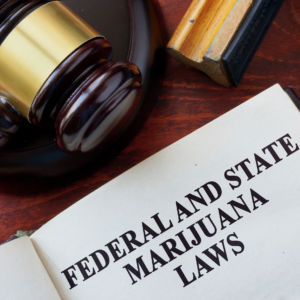Statewide marijuana policies are rapidly evolving. A majority of the public now believes that marijuana prohibition must come to an end, and a growing number of politicians are similarly calling for alternatives to criminalization.
The two most commonly debated policy alternatives to the status quo of marijuana prohibition are decriminalization or legalization. To date, 27 states and the District of Columbia have either legalized or decriminalized cannabis — with Illinois and Virginia being the most recent states to move in this direction.
Decriminalization and legalization are two distinct policies. Both are preferable to outright prohibition, but only legalization offers a comprehensive, long-term solution to the failed policy of cannabis criminalization. By contrast, decriminalization is a stopgap measure at best. Here’s why:
Decriminalization is neither a novel nor a particularly progressive policy alternative. The policy, which replaces criminal penalties for low-level personal possession offenses with civil sanctions, was initially recommended by former President Richard Nixon’s “Shafer Commission” in 1972.
At that time, the commission recommended that the “possession of marihuana for personal use no longer be an offense, (and that the) casual distribution of small amounts of marijuana for no remuneration, or insignificant remuneration no longer be an offense.”
By definition, decriminalization (as initially recommended by the commission and later implemented in various states) does nothing to address activities that are commonly defined as either “for-profit” or commercial in nature, such as engaging in cannabis cultivation or sales.
Instead, these behaviors remain criminalized. Consequently, while decriminalization provides some relief to the individual cannabis user, it woefully fails to either address or acknowledge the commercial market that exists to provide cannabis to the tens of millions of Americans who regularly consume it.
As a result, unlike legalization, decriminalization does nothing to reduce the size or the nature of the illicit cannabis market, nor does it bring any needed controls to this market.
For example, decriminalization provides no opportunities for regulators to either impose or enforce age-controls regarding who can possess marijuana or where it may be legally (and safely) obtained. It provides state regulators with no mechanism to either license or oversee commercial marijuana production or sales, or to provide or enforce standards with regard to product testing, labeling, and packaging.
It allows no opportunity for regulators to provide oversight or to impose guidelines with regard to the purity and potency of the marijuana products available in the marketplace. And it provides no ability for state or local governments to tax commercial and retail cannabis transactions and to reinvest these dollars back into the community.
Rather, it leaves the criminal marketplace as is — dominated by criminal entrepreneurs rather than by licensed businesses.
Most problematically, decriminalization continues to classify cannabis as contraband under the law, thereby assuring that police will continue to routinely interact with communities — and communities of color especially — in order to maintain the failed policy of marijuana prohibition.
Under this policy, police issue citations to those who possess small quantities of cannabis and law enforcement must continue to use force, when necessary, to seize marijuana and marijuana-related contraband — sometimes with tragic consequences.
In many instances, police continue to use, and often abuse, tactics reliant on the plant’s illicit status — such as citing the smell of cannabis as probable cause for a motor vehicle search — to disproportionately profile those in marginalized communities.
As reported in a recent report issued by the American Civil Liberties Union, black Americans are 3.6 times more likely to be arrested for a marijuana crime than white Americans despite using cannabis at similar rates. In many instances, decriminalization perpetuates this reality.
For example, police officers in New York City for decades continued to disproportionately target African-Americans and Latinos for marijuana-related violations despite the state having decriminalized the offenses in the late 1970s. In short, history has shown that decriminalizing cannabis will do little to discourage this sort of police misconduct and bring little tangible relief to communities of color.
For these reasons, state politicians would be wise to pursue efforts that legalize and regulate marijuana in lieu of merely decriminalizing its personal possession.
A pragmatic regulatory framework that allows for the legal, licensed commercial production and retail sale of marijuana to adults but restricts and discourages its use among young people — coupled with a legal environment that fosters open, honest dialogue between parents and children about marijuana’s potential harms — best reduces the risks associated with the plant’s use or misuse.
By contrast, advocating to maintain marijuana’s status as an illicit commodity under a scheme of decriminalization, perpetuates and compounds many of the social ills associated with failed policy of prohibition.


